Road Cycling For Beginners: Everything You Need To Get Started

August 17, 2020
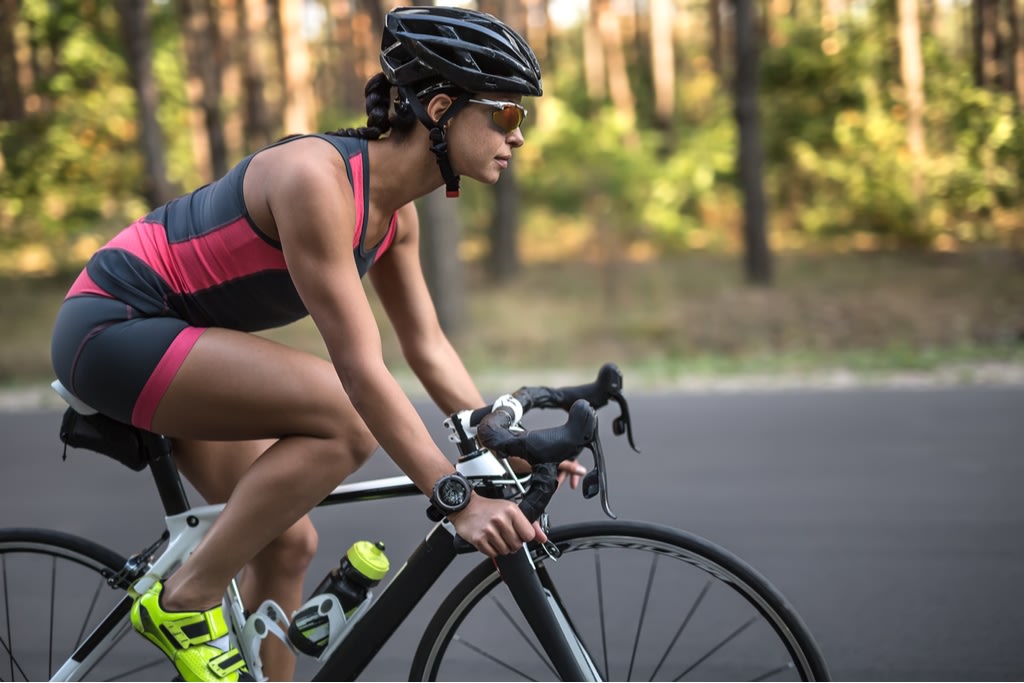
If you’ve ever seen someone zoom by on their bike, the wind in their hair, and thought, “I’d like to try that,” you’re in good company. There’s been a massive bike boom the last few years and for good reason: regular cycling stimulates and improves your heart, strengthens your muscles, improves balance and coordination, and reduces blood fat levels.
Cycling is also a low-impact cardio exercise and isn’t weight bearing, which means it doesn’t put a lot of strain on your joints. This makes it an ideal LISS (Low Intensity Steady State) workout, as it keeps your heart rate at a steady rate for an extended period of time. As a bonus, cycling also doubles as a mode of transport — no need for petrol, no parking space to pay for!
Want to learn how to start cycling for fitness? Our guide for beginners explains what bike to get, how to get started, and steps for leveling up your cycling.
Jump to:
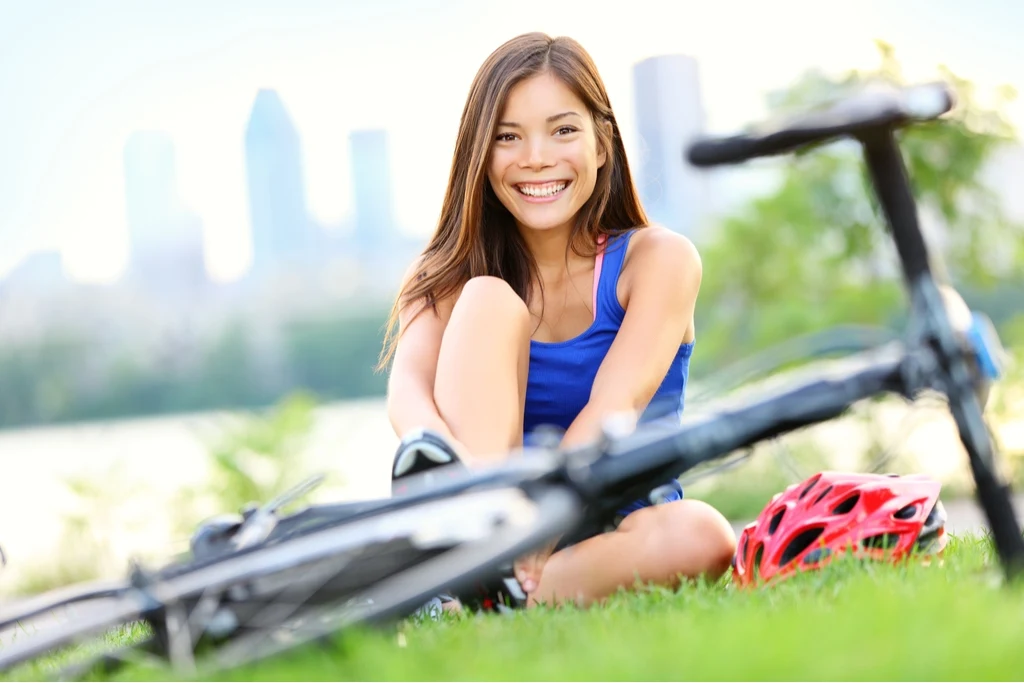
Cycling gear for beginners — what do you need?
You don’t need lots of expensive gear to start cycling, but you will need two important things: a bicycle you feel comfortable riding, and a helmet to keep you safe.
First, you’ll need a bike that fits your body
If you’re keen to incorporate cycling into your fitness routine but don’t have a bike, this doesn’t necessarily have to be a barrier. Ask around to see if anyone can lend you a bike (chances are someone will have one sitting unused in their garage) or check out second-hand stores or websites for a bargain. When you’re first starting out, you don’t need all the bells or whistles, just a bike that fits your body and you feel comfortable riding.
Once you’ve found a bike, it’s important to make sure the sizing is correct. First, check the height: if the bike has a horizontal tube, aim for a 2.5-5cm (1-2 inch) clearance from your crotch to the tube; if the bike has a sloping top tube, you’ll want at least a 5cm (2 inch) clearance.
Next, make sure the seat height is correct. Take a seat and push one pedal to the 6 o’clock position — your knee should be completely straight. If your knee is bent, increase the height of the seat. Last, check the handlebars: when seated, you should easily be able to reach the brakes, and your elbows should have a slight bend.
If your bike’s been sitting around in a friend’s garage for a few years, you’ll also want to get the tyres checked — chances are they’ll need a good pump before you hit the road!
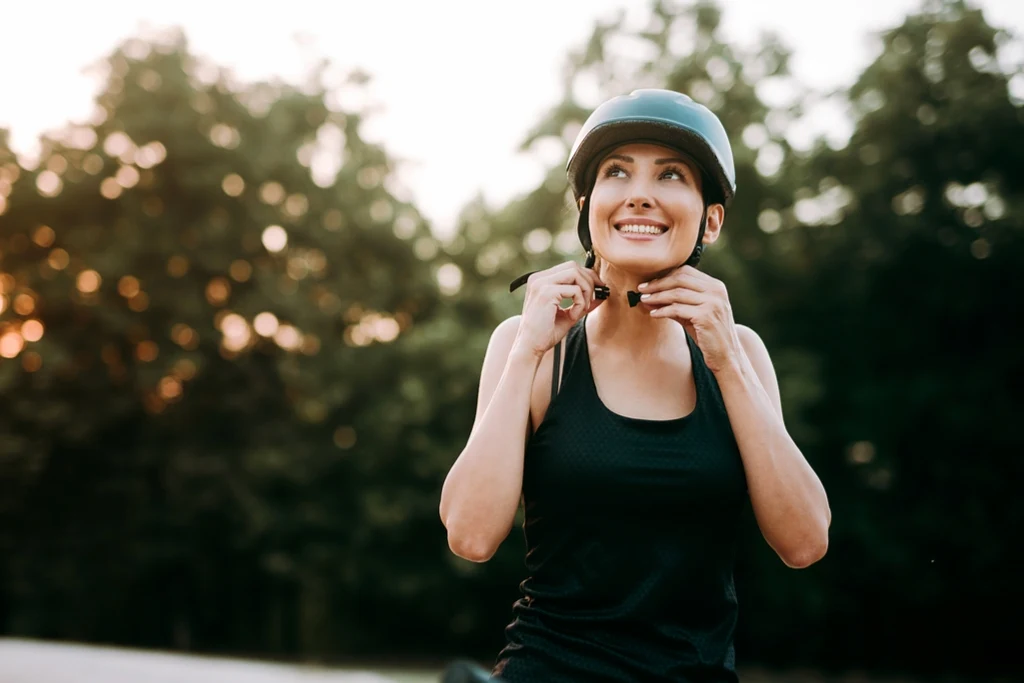
Other gear you’ll need
It’s plain and simple: if you’re going to ride a bike, you need a helmet. Again, you don’t need to spend lots of money but you will need a helmet that meets your country’s safety standards, so if you’re borrowing from a friend or buying second hand, make sure it was designed in the last few years.
Depending on where and when you plan to cycle, you may also need:
Cycling gloves to keep your fingers warm and protected from the elements
Sunglasses to protect your eyes from the sun, wind and any debris
A bike lock to keep your bicycle safe when out and about
Bike lights for night riding
Some tools for on-the-go maintenance, like spare inner tubes, a multi-tool and a hand pump
How to start cycling and build your confidence
Once you’ve got the gear, it can be pretty tempting to hit the road immediately. But if you haven’t cycled in awhile, your body will definitely benefit from a good warm-up, some targeted training and a few practice rides.
Warm up your body
A good warm-up before you start cycling will help protect your body from injury. Your pre-bike stretch should target the major muscles you’ll use on your bike: the hamstrings, glutes, hip flexors, quadriceps and calves.
Try some leg swings to loosen up your hips, the cat-cow stretch to warm up the muscles around your spine, the dynamic runner’s lunge to stretch the hamstrings and quads, and a few bodyweight squats to stretch out your lower body.
Invest in some targeted muscle training
Cycling may look like it’s all about the legs, but you also need a strong core and lower back, plus good balance and coordination. Try incorporating some of these exercises into your existing fitness routine:
Alternating bodyweight lunges to target your quads, hips and hamstrings
Squats. These focus on the glutes, quads, hamstrings and core muscles
Single leg deadlifts to target the hamstrings, hips and lower back. Working one leg at a time will help with your balance and coordination, too.
Planks. These will work your abs, lower back and shoulders, and also work wonders to build overall strength and balance.
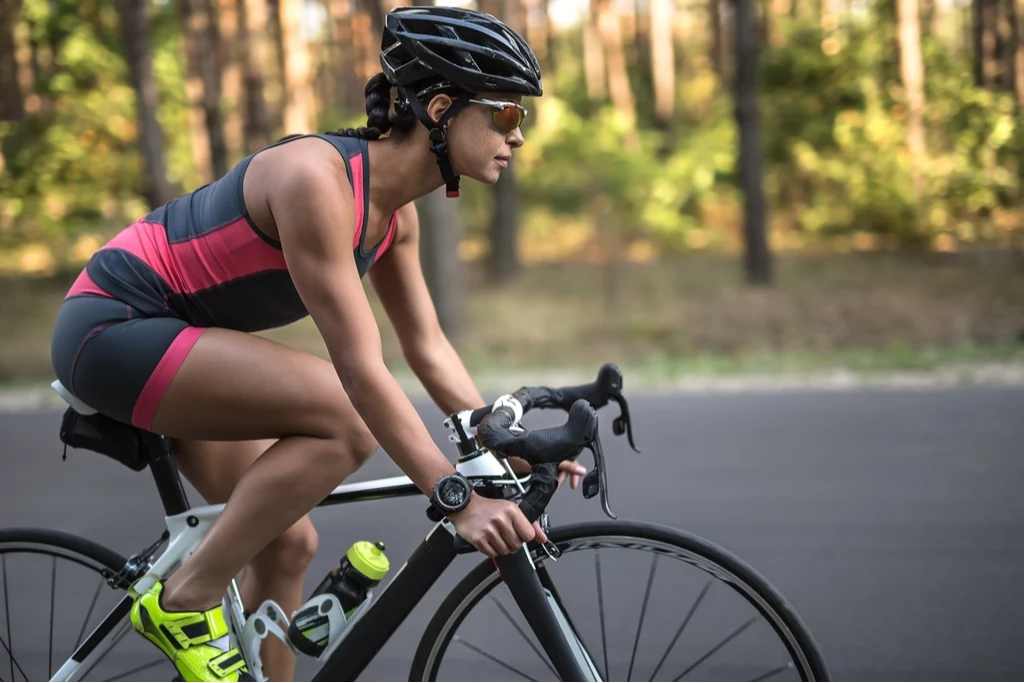
Practise the basics
If it’s been a while since you used a bike, it’s a good idea to spend some time reviewing the basics before you attempt busy main roads. Find a quiet street or shady park and practise starting, stopping, turning, shifting the gears up and down, signalling and using the brakes.
Start slow
Your first few rides will probably feel quite tough, which is absolutely normal. Your body needs time to adjust to a totally new activity, and cycling requires a good amount of skill, balance and concentration.
Try not to attempt too many long or strenuous rides right away, as you might end up feeling fatigued, getting injured or find yourself totally sick of cycling before you’ve even started! Focus on gradual improvement over a longer period of time, and always make sure you get adequate muscle recovery between rides.
How to build cycling into your fitness routine
Cycling is about as ideal as cardio gets. It builds strong legs and core efficiency and, unlike high-intensity exercise like running or jumping, doesn’t put stress on your joints. Cycling also increases cardiovascular fitness, builds muscle strength and improves joint mobility. Plus, cycling outdoors can be so invigorating that you can easily burn lots of calories without feeling like you’re working that hard.
To reap all these wonderful benefits, consistency is key. Here’s some tips for incorporating cycling into your existing routine.
Add cycling into your LISS workouts
LISS stands for Low Intensity Steady State, and is a low-intensity cardio workout that forms an important part of all the SWEAT programs. A good LISS workout lasts between 30-60 minutes, during which time your heart rate is elevated to about 60% of your max heart rate zone, which is also known as the fat-burning zone.
Maintaining your body’s heart rate at a steady pace for an extended period of time helps to promote weight loss, increased blood flow and improves your body’s overall endurance. Popular LISS workouts include walking, rowing, swimming and, of course, cycling, which provides all the cardiovascular benefits of exercise without over-taxing your body.
SWEAT programs typically recommend 2-3 LISS sessions per week, and these should ideally last for between 30-60 minutes in length. You could spend all of those LISS sessions on your bike or try mixing and matching with other forms of low-intensity cardio until you find your sweet spot.
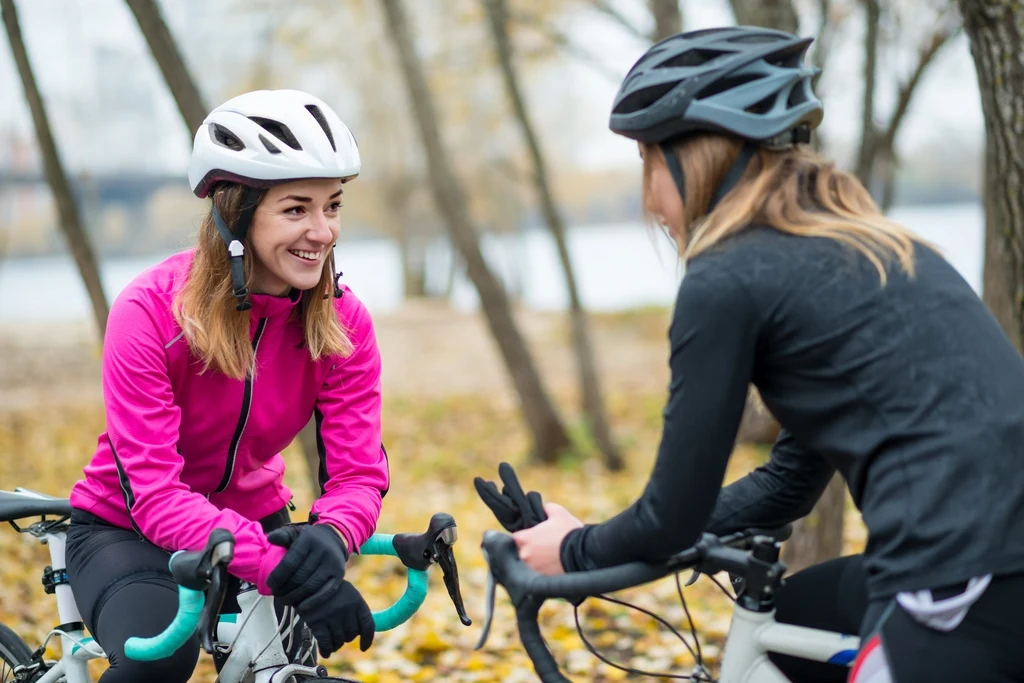
Find some riding buddies
This could mean finding a cycling club (use Google to search for “cycling club + where you live” to find clubs in your area) or convincing some mates to dust off their bikes and come cycling with you. Exercising with other people is a great way to build accountability and establish healthy habits.
Improve your technique
Once you’ve got a few miles under your belt and are feeling more confident, you can start thinking more about technique. Here’s some pointers to get you started:
Position your body closer to the handlebars
If you’ve ever cycled in the wind, you’ll know how much it can slow you down. Try positioning your body closer to the bars and tucking in your elbows – this will help you ride faster in gusty weather.
Brake less
Though you may feel tempted to brake every time you reach a fast road or go downhill, try and avoid braking unnecessarily. Every time you stop or slow down, you’ll need to pedal harder to get back up to speed. If you do need to slow down, use your rear brake and reserve your front brake for when you really want to stop. Slamming on your front brake might send you flying over the handlebars!
Anticipate hills
If you struggle to cycle uphill, try shifting into a low gear a few moments before you think you need it and maintain a steady pedal pace — this will help you carry momentum into the ascent and conquer that hill.
Try interval training
Feel like you’re stuck at the same speed? The best way to get faster is interval training, during which you cycle for short bursts of speed above your usual pace, and then slow down and recover, before repeating over again.
After a while, you’ll establish your own cycling style
As time goes by and you spend more time pumping those pedals, you’ll start to get a sense of your individual riding style. You might love the convenience of using your bike to commute to work or study, or prefer a slow, aimless cruise around your neighbourhood as the sun’s coming down.
Maybe you yearn to get off the city streets and ride fast, or spend an afternoon exploring dirt roads and winding trails. There’s no right or wrong way to cycle — whenever and however feels good for you.

A more empowered you starts with Sweat, and our editorial team is here to bring you the latest fitness tips, trainer recommendations, wellbeing news, nutritional advice, nourishing recipes and free workouts.
* Disclaimer: This blog post is not intended to replace the advice of a medical professional. The above information should not be used to diagnose, treat, or prevent any disease or medical condition. Please consult your doctor before making any changes to your diet, sleep methods, daily activity, or fitness routine. Sweat assumes no responsibility for any personal injury or damage sustained by any recommendations, opinions, or advice given in this article.
Fitness